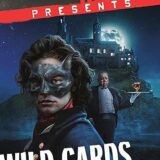
Like several other SF/F artists who found their way to success as commercial artists (among them Bryn Barnard, James Gurney, Alan Gutierrez, Richard Hescox, David Mattingly, Robh Ruppel), Paul studied at the Art Center College of Design, Los Angeles, California in 1967 and soon found work in advertising, concentrating mostly on still-life and men-and-machines subject matter. Then, in 1976, he began working with an art representative in New York who brought his work to the attention of Ace Books. And – just like that – Paul turned his command of hardware and machinery illustration to science fiction book covers.

His first published cover was for Ace’s Best from F&SF anthology, in 1977. He also created the cover for the first issue of Asimov’s Science Fiction magazine, 1978.
Although Paul became as proficient at illustrating people as he did machines (as his sexy fantasy cover for Asimov’s shows), for the next twenty years – until the time he retired from the field, in the mid 1990s – he was still best known for his high-tech illustrations. Vincent DiFate called him “One of the top “gadget” artists currently working in the American paperback market” – and chose Paul’s art for the cover of his superb art book, Infinite Worlds: The Fantastic Visions of Science Fiction Art (Wonderland Press/Penguin, 1997)
Alexander almost always worked in gouache on illustration board, using an airbrush and handbrush. It’s a more fragile medium than most, but one favored by illustrators because of its brilliant opaque colors. To alert those Art Directors who might not be aware of gouache’s delicate surfaces, as well as warn them against carelessness, he would put clear “handling directions” on the back of all his finished paintings. Always a neat draftsman, these (frequently) hand printed or typed instructions would accompany the title and other pertinent data on the back. What a relief for collectors of his works, today! How I wish other artists had been so methodical and conscientious!

Paul was equally workmanlike when it came to his pencil roughs and full color concept sketches, which he prepared after reading the complete manuscript. He always preferred to submit his own ideas for covers rather than having an art director select the scene – and some of these color prelims could stand alone as miniature paintings.
While still doing some corporate and advertising art in the 1980s, and SF art into the 1990s for Baen, he has always kept a special place in his heart for paintings he’s done of trains and military subject matter.

Yes, Paul is a long-time train buff – and so was delighted to be asked to paint a series of ads, train-related!

By the 1990s the declines and changes in the commercial print market had had a severe effect on Paul’s career. Unwilling to work digitally – let alone acquire a computer! – Paul worked for Baen Books until he figured it was time to quit, late 90s.
His later paintings remained as lively and colorful as those done at the start of his career, and retained all the detailed “gizmos” that made him so successful over his 30 years working in the genre. He had no real equal, other than John Berkey . . . they worked with exactly the same subject matter but in totally opposite ways. As impressionistic as Berkey was, in style, Alexander was ‘tight’.

Paul’s career as an illustrator is behind him, now. He currently paints for his own enjoyment and occasionally for local church, civic and charitable organizations. He also is an amateur photographer, who “someday,” he says, will acquire a digital camera. 











Recent Comments